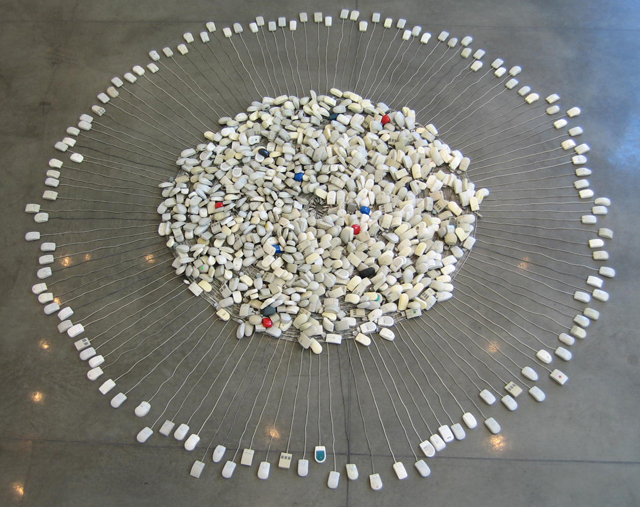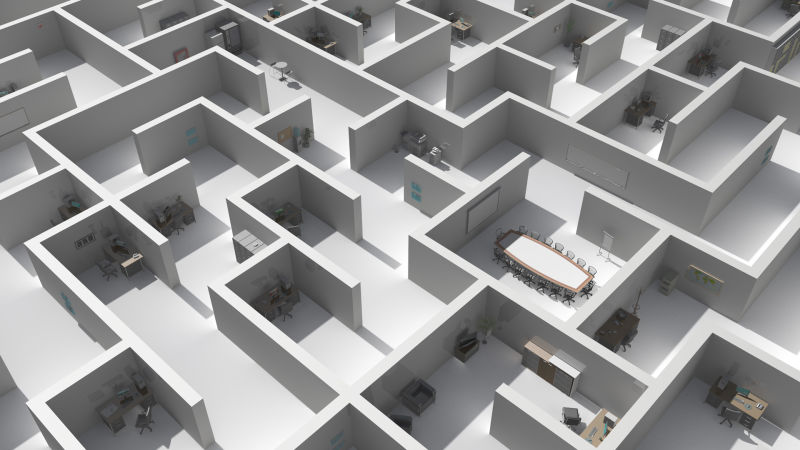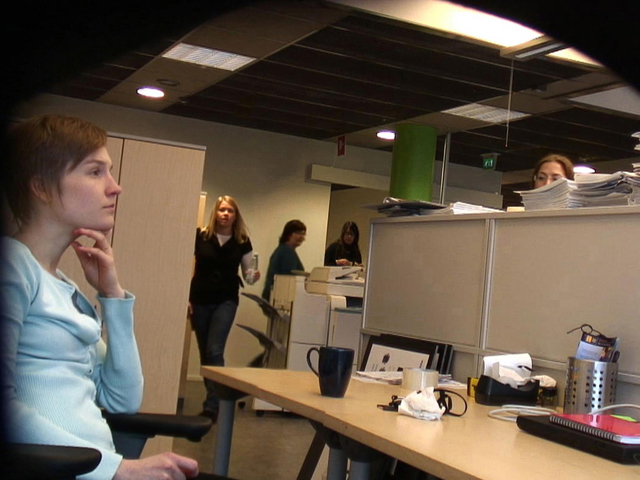To: KQED Arts Readers
Cc: Yerba Buena Center for the Arts
From: Sarah Hotchkiss
Re: ‘Office Space’ the exhibition, not the movie
It has come to my attention that the local arts organization Yerba Center for the Arts (YBCA) has turned their attention to the workplace. The show, curated by Ceci Moss, is Office Space, a nod to the 1999 Mike Judge comedy of the same name. Before I even entered the workforce, this movie prepared me for my inevitable participation in it, complete with inexplicably evil technology, looming superiors and — at times — utter boredom.
![Sean Raspet, Installation view of 'Folder (A Novel)', 2010; 'OBSCENITY TRIALS,' 2010; and '2Registration::(Untz'tled (Police Incident (8[e.)) 7], ((((2007-2012) 2007-2011. ') ') 2012),' 2014.](http://ww2.kqed.org/arts/wp-content/uploads/sites/2/2015/11/Raspet640.jpg)
2012),’ 2014. (Courtesy: the artist and Jessica Silverman Gallery, San Francisco)
If many of us have experienced a shift in the nature of our workplace in the past decades (from cubicle to co-working, or office to home office), others have experienced no such shift. I type this memo at a work desk capable of moving between standing and sitting heights, in my beige cubicle attached to a warren of other beige cubicles. The technology I use is often inexplicably evil. A tiny sliver of natural light is visible if I tilt my head back at just the right angle. Otherwise, it’s just flickering fluorescents.
Office Space (the exhibition) is filled with homages to working environments like mine. Cory Arcangel’s installation Permanent Vacation pits two email accounts with “out of office” vacation responses against each other in an endless loop of gently dinging inbox sounds. Sean Raspet places a desk of coffee mugs and file folders in front of OBSCENITY TRIAL, a wall of the very same ceiling tiles currently hanging over my head. Mika Tajima rearranges the elements of the Herman Miller Action Office (the original cubicle) into nonfunctional freestanding and wall-leaning configurations.

Other aspects of the show take the trappings of office spaces past the knowing nod and into the realm of absurdity, as Office Space (the movie) did so well. Mark Benson’s Open Fields positions fake plants on a shelf just below the YBCA’s Juliet Balcony, squishing their giant silk branches against the underside of the overhang. Joseph DeLappe’s The Mouse Mandala is a massive woven floor piece made of defunct computer mice, their many tails caught in the middle as they stretch outward, trying to escape what looks unnervingly like a rat king.



